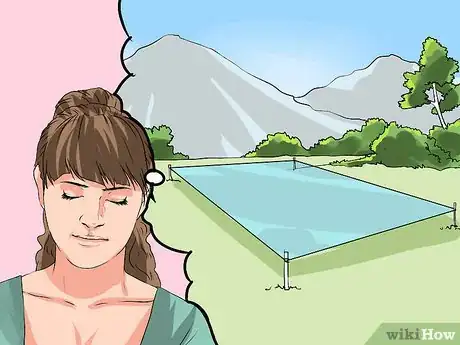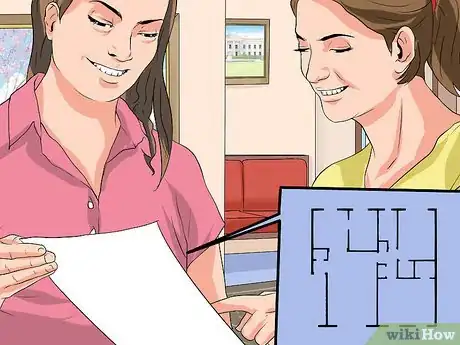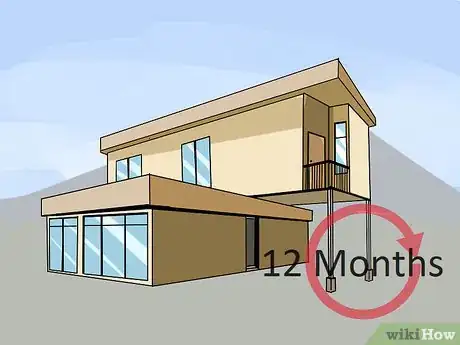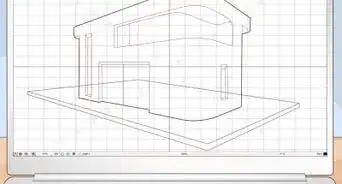This article was co-authored by wikiHow Staff. Our trained team of editors and researchers validate articles for accuracy and comprehensiveness. wikiHow's Content Management Team carefully monitors the work from our editorial staff to ensure that each article is backed by trusted research and meets our high quality standards.
There are 9 references cited in this article, which can be found at the bottom of the page.
wikiHow marks an article as reader-approved once it receives enough positive feedback. In this case, 96% of readers who voted found the article helpful, earning it our reader-approved status.
This article has been viewed 109,072 times.
Learn more...
Modular homes are very similar to traditionally built new construction homes in many ways. In general, the quality and the options are the same. The big difference is that modular homes are partially constructed in a factory, while traditionally built houses are built entirely at the build site. Because of this, modular homes are often more affordable, but the process of purchasing one is somewhat different than buying a traditional house.[1]
Steps
Deciding on Your Needs
-
1Choose a location. When you buy a modular house, you need to own the land before the house is constructed. This means you will have to start shopping for an empty parcel of land to put your house on. It's a good idea to have at least a general idea of where you want to put your house before you start working with a builder.[2]
- Land is very expensive in some areas, so it's important to understand how much an average parcel will cost in the area you want to live in before you start planning your house. This will ensure that you do not go over-budget when you buy the land. Don't forget to consider what your property taxes will be.
- Consider that it will be much more expensive to connect your home to utilities if it is in a remote location.[3]
- A modular house is not the same thing as a manufactured home or mobile home. A modular house is placed on a permanent foundation and cannot be moved, while a manufactured home is designed to be easily relocated to a new site.[4]
-
2Think about the space you need. Once you settle on a location, you will need to decide what kind of space you need in your modular house. Modular houses can be very tiny or palatial, so you have lots of options. Think about how many rooms you need and how big you need them to be.[5]
- Think about how much square footage your family currently has and how much extra you need. If you're not sure, consider visiting open houses or model homes in your area. Even if you don't plan on buying this type of home, visiting them will give you a good sense of how much space you need.
- Keep in mind that more square footage typically means more expense. Carefully consider your budget when deciding how much house you really need.
- In addition to square footage, you should think about what kind of floor plan you would like, or how you would like the rooms to be laid out. For example, some people prefer open concept floor plans, while others prefer defined rooms. You may also have preferences regarding the locations of certain rooms.
- When deciding on your needs, be sure to plan for the future as well. For example, if you plan on having children in the next few years, you may want to purchase a home that is large enough for a family now.
Advertisement -
3Consider your style preferences. Modular houses are available in a wide array of different styles, so you can find one that fits your style, whether you prefer traditional homes or a more contemporary aesthetic. Having a good idea of what style of home you are looking for will make it easier to find the right modular home builder for you.[6]
- If you have no idea what style of home you would like, look around the neighborhood and online for design inspiration.
- Keep in mind that some styles offer functional benefits as well as aesthetic benefits. For example, ranch style homes are much more accessible for the elderly and disabled than Victorian style homes.
- The location you choose may influence your design choices. For example, if you buy a lot in an older neighborhood, you may want the architecture of your house to match that of the neighboring houses.
- In addition to the style of house you would like, you may want to start thinking about the finishing touches you would like, such as kitchen countertops, siding, and flooring, as these can have a big impact on your budget.
Finding the Right Builder
-
1Shop around. There are lots of different companies that build modular houses, so it may seem overwhelming to try to choose one. Each company is different, so do some research to find one that offers quality construction and the style you are looking for at a price that fits your budget. Researching multiple builders will help ensure that you select the best one for you.[7]
- If you contact a company outside of your state, be sure to ask them if they are able to build in your area. Not all companies are permitted to construct modular houses in all areas.
- Some companies specialize in specific styles of homes, while others focus on homes that fall within certain price ranges. If the first company you look at doesn't offer a design that meets your needs or budget, keep looking because chances are another company will.
- If possible, read reviews about the different companies online or even talk to people who have purchased homes from them. This should give you a good idea of the quality of the houses they build.
- Once you've narrowed down your search, ask the company if you can tour houses that they have built in the past. Ideally, you should try to tour a recently built house that is similar to what you are looking for, as well as a house that was built ten years ago or more. This will allow you to see if the construction stands up over time.
-
2Ask about what is not included. Depending on the manufacturer, the list price of the house may not include everything you actually need to construct your home. It is important to ask the builder lots of questions so that you understand how much the home will really cost you.
- You may need to pay a separate company to pour the foundation for your home.[8]
- You may need to pay extra to have utilities like electricity, natural gas, and sewer lines hooked up to your house. If the area does not have sewers, you may have to pay to have a septic system installed.
- Basic mechanics like electrical, plumbing, and HVAC may also not be included in the price of the house, so be sure to ask.
- There may also be a charge for delivering the modular house to your site.[9]
-
3Ask about customization. While you must choose a specific model when you buy a modular home, the floor plans can often be customized to your specific needs. For example, you may be able to add a garage or a second floor to your house, or you may be able to move walls around inside so you have a larger kitchen. Be sure to ask the builder if you are able to customize your house and how expensive customizations typically are.[10]
- Be sure to find out when you need to make your final decisions by. You may not be able to request any additional changes once the building process begins.
- Ask the builder what kinds of customizations would require engineer approval, as these alterations may be significantly more expensive.
-
4Ask about upgrades. Customizations are changes to the layout of the house, while upgrades are typically changes to the materials that are used to finish the construction. Upgrades are typically aesthetic, but they can be functional as well. Be sure to ask the builder questions about what upgrades are available and what the cost is.[11]
- Find out if you are limited to specific materials or if you are able to shop for your own from anywhere.
- When deciding which upgrades that you can afford, be sure to consider how expensive it would be to upgrade later. For example, it will probably not be any more expensive to change out your countertops in a few years than it would be to upgrade them during the building process. It would be more expensive, however, to add additional insulation later on.[12]
- Ask if you can upgrade anything you want. For example, it is common for home builders to offer buyers the option of upgrading their kitchen cabinets and flooring, but less common to offer the option to upgrade windows, roofing, or mechanical systems. If you are interested in upgrading any of the features of your home, be sure to find out if it is an option before you commit.
Dealing With the Details
-
1Get financing. Financing a modular home is a little different than financing a traditional house because you need to buy the land and pay the modular home builder in full before the construction is complete. If you don't have the funds to pay for the house in cash, you will need to apply for a construction loan, which is a short-term loan that gives you the money you need to pay for the construction of your house. Once the house is built, you will be able to switch over to a traditional mortgage.[13]
- Unlike manufactured homes, modular homes do not depreciate, so getting a loan from a bank should not be an issue. Many banks offer construction loans with great rates.
- Some modular building companies offer their own financing, which many customers find more convenient than having to shop around for bank loans. Always ask building companies if they offer these options, but make sure the interest rate and fees are comparable to those being offered by banks before you agree to it.
- Whether you get your construction loan through a bank or through the construction company, make sure you understand if it will be automatically converted into a mortgage or if you will need to apply for a new mortgage after the home is built. Applying for a second loan will typically mean more fees.
- It's a good idea to take out a loan for a little more than you expect to spend, just in case unexpected expenses come up.
- Keep in mind that you will be making payments on your construction loan before you are able to move in to your home, which means you may still be paying rent or mortgage payments for another house. Be sure you can afford this before you commit to taking out the loan.
-
2Find a general contractor. Modular home builders often do not provide any on-site construction services, so you may have to hire a general contractor to complete the building process for you. Hiring an experienced, reliable general contractor will make the process easy and stress-free for you.[14]
- It is essential to hire a general contractor who has a lot of experience in working with modular homes, as they pose unique construction challenges.
- It's a good idea to request bids from at least three general contractors in order to compare prices. Be wary of any price that seems unusually low.
- Don't forget to ask the contractors how soon they will be able to finish your project, as they may already have other obligations.
- Before you hire a general contractor, always get several references from past customers. If possible, visit modular homes that the contractor has worked on in the past to see his work.
- The modular home builder may recommend a contractor, but this doesn't mean that you shouldn't still get other bids and check references.
-
3Buy the perfect piece of land. When buying land, you need to consider more than just the surrounding area. There are lots of little details that can make it more difficult to build on a lot, so do your due diligence to make sure you don't end up spending more than you have to.[15]
- When buying land, be sure to consider the zoning regulations of the property. It is important to ensure that you will be allowed to build the kind of structure you want on the land, so wait for written permission from the town before finalizing the purchase.[16]
- Make sure the property is not protected by any environmental restrictions that would prevent you from building there.
- Find out if anyone else has any rights to the property. Existing agreements may not be overridden by your purchase, so it's important to know about them.
- Have the soil tested by a professional. You can test for both soil contamination and soil composition. Contamination may make the property unfit for residential usage, while soil that contains a lot of clay or gravel may increase construction costs significantly. Most land sellers will not have a problem with you conducting these kinds of tests before you purchase the land.
-
4Wait for your house to be ready. One of the great things about choosing a modular house is that the building time is typically much shorter than that of a traditionally built house. This is because a large amount of the construction is done in a factory, so the weather never causes delays. While you may have to wait six to 12 months for a site-built house to be ready, you will typically only have to wait two or three months for your modular home to be ready.[17]
- Be sure you have somewhere to stay while your modular house is being built. Even though delays are not common in the factory, they can still occur in the final building stage, so it's best to have flexible arrangements.
Community Q&A
-
QuestionHow far off the ground does a modular home need to be, and why?
 Upnorth HereTop AnswererA modular home is like any other home in the area, with a foundation slab or a basement sitting directly on the ground. "Modular" simply means it was assembled from prefabricated parts rather than built "from scratch" on-site. If you meant "manufactured home", that would be different, referring to things that used be called "mobile homes" (in the USA) prior to 1976. Local building code would determine the min and max height of those, including circumstances related to slope and soil type.
Upnorth HereTop AnswererA modular home is like any other home in the area, with a foundation slab or a basement sitting directly on the ground. "Modular" simply means it was assembled from prefabricated parts rather than built "from scratch" on-site. If you meant "manufactured home", that would be different, referring to things that used be called "mobile homes" (in the USA) prior to 1976. Local building code would determine the min and max height of those, including circumstances related to slope and soil type. -
QuestionWho's responsible for "setting" the house?
 Upnorth HereTop AnswererThe contractor building the house is often also responsible for putting in the foundation upon which the modular home will be assembled. He or she might subcontract any excavating and concrete work, making sure the end product is properly located and level for the design of the modular house.
Upnorth HereTop AnswererThe contractor building the house is often also responsible for putting in the foundation upon which the modular home will be assembled. He or she might subcontract any excavating and concrete work, making sure the end product is properly located and level for the design of the modular house. -
QuestionDo I need planning permission?
 Upnorth HereTop AnswererIf you buy a lot that has a modular home already installed, your predecessor would probably have already obtained the necessary zoning or building permits to build it.
Upnorth HereTop AnswererIf you buy a lot that has a modular home already installed, your predecessor would probably have already obtained the necessary zoning or building permits to build it.
References
- ↑ http://www.modulartoday.com/prosandconsofbuyingmodularhome.html
- ↑ http://www.modulartoday.com/prosandconsofbuyingmodularhome.html
- ↑ http://modularhomeowners.com/the-definitive-guide-to-building-modular/modular-home-real-estate/
- ↑ http://freshome.com/2013/03/27/10-basic-facts-about-modular-homes/
- ↑ http://www.houzz.com/ideabooks/31989008/list/house-hunting-find-your-just-right-size-home
- ↑ http://www.modulartoday.com/prosandconsofbuyingmodularhome.html
- ↑ http://modularhomeowners.com/the-definitive-guide-to-building-modular/modular-home-real-estate/
- ↑ http://freshome.com/2013/03/27/10-basic-facts-about-modular-homes/
- ↑ http://modularhomeowners.com/how-much-will-my-modular-home-cost/
- ↑ http://modularhomeowners.com/the-definitive-guide-to-building-modular/modular-manufacturers-and-prefab-design/
- ↑ http://modularhomeowners.com/the-definitive-guide-to-building-modular/modular-manufacturers-and-prefab-design/
- ↑ http://modularhomeowners.com/the-definitive-guide-to-building-modular/finalizing-your-modular-home-design/modular-home-budget-woes-how-to-stay-under-budge/
- ↑ http://www.modularhomebook.com/book/chapter09.html
- ↑ http://modularhomeowners.com/the-definitive-guide-to-building-modular/modular-home-general-contractors/
- ↑ http://modularhomeowners.com/the-definitive-guide-to-building-modular/modular-home-real-estate/
- ↑ http://modularhomeowners.com/the-definitive-guide-to-building-modular/modular-home-real-estate/
- ↑ http://www.modulartoday.com/prosandconsofbuyingmodularhome.html
About This Article
Modular homes are a popular alternative to traditionally built houses that are often more affordable and quicker to construct. Your main expense will be securing an empty land where you can build your modular house. Once you’ve bought your plot, choose the details of your modular home, like the materials, how many rooms you want, and the architectural style. In addition to buying the land and house, you’ll need to pay for a foundation to be laid and for your home to be hooked up to electricity, water, and gas lines. If you need to finance the house, apply for a construction loan to build the house. Then, once it’s built, you can switch to a traditional mortgage. It should take around 2 or 3 months to build your house on site. For more tips, including how to choose a location for your modular home, read on!



































































